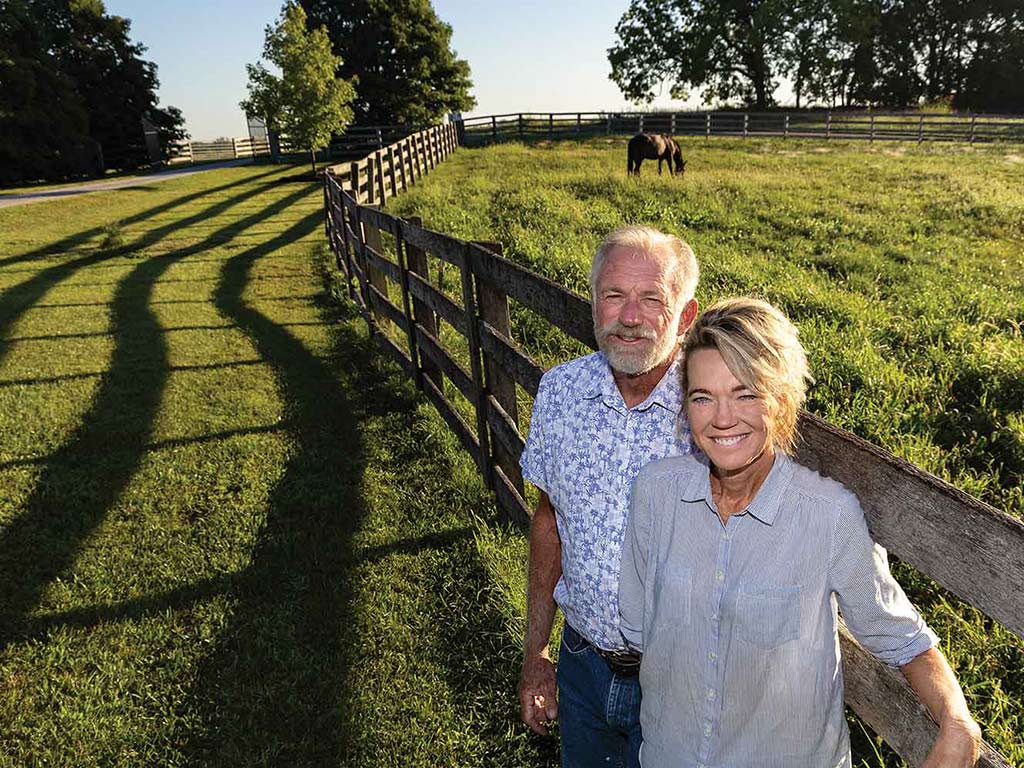Agriculture, Specialty/Niche April 01, 2024
Popcorn is Poppin'
The Fitkin family has cracked a fun farming niche.
by Gil Gullickson
Businesses sometimes start in the most roundabout ways.
Today, Jim Fitkin, his wife Debbie, and daughters Lora and Jennifer supply popcorn to multiple grocery stores, movie theaters, and other outlets. But it all started on just a fraction of an acre on their Cedar Falls, Iowa, farm. "We'd always grown a bit of popcorn in our garden," says Jim Fitkin. What spurred expansion, though, was a long-forgotten farm program in the early 1980s.
"The PIK [1983 Payment-in-Kind] program limited the number of corn acres we could grow," he says. This didn't apply to acres devoted to silage that helped feed the dairy cows that he and his father Wayne milked.
"Popcorn made great silage, and it didn't count against our corn base acres," he says. "We worked with a seed dealer in Ames, Iowa, who had bred popcorn hybrids for corn silage.
"It was popcorn, but that's about all you could say about it," says Jim. "It worked better for silage."
Meanwhile, the Fitkins tried growing better popcorn in their garden.
"We finally decided we should start trying to sell some of it," Jim says. "We were still milking cows, so we kept hovering at selling about $40 worth of popcorn once a month just for something to do," he says.
After a while, though, they expanded sales by selling 50-pound bags to nearby bowling alleys. Their big break came in 1986, when Jim pitched FIT-POP popcorn—the farm's brand—to a local Hy-Vee store.
"Back then, people just wanted to buy popcorn from big companies," says Jim. "I went in there and talked to three or four department heads. Finally, I saw the store director. He started to brush me off, but then we got on the subject of him buying a house. He asked if I was related to Larry Fitkin, who was my cousin. He said, 'You know, I just bought a house from him.'"
A few moments passed.
"Well," the store manager finally said, "let's give your popcorn a try."
That did it. The Fitkins started growing and selling more popcorn, which increased when they stopped milking cows about 25 years ago. They expanded sales from 15 to 20 acres to where they now sell FIT-POP popcorn in 25 Hy-Vee stores in eastern Iowa. Other clients include several movie theaters, farmers' markets, and sales through Hansen's Farm Fresh Dairy, a Hudson, Iowa, firm that brands its milk.
Above. The farm's FIT-POP brand is sold in Iowa grocery stores and other outlets. They also pop the popcorn with various flavors for sale. The more value that is added to the popcorn, the higher the sale price.
Specifics. The Fitkins use the same planter and combine for growing popcorn that they use for field corn. Weed control is more challenging, as fewer herbicides are approved for popcorn compared to field or sweet corn.
"It's also a more delicate plant," Jim says. This leaves it more prone to wind events snapping it. Insect control is also more difficult compared to field corn, as no transgenic technology exists to control corn rootworm and European corn borer. They use crop rotation to minimize insects and also diseases like gray leaf spot.
Yields run lower compared to field corn, although test weight is higher. Last year, their popcorn's test weight averaged around 67 pounds per bushel for popcorn, compared to 58 pounds per bushel for field corn. Typically, 5 tons per acre is a good yield, Jim says.
What gives popcorn an edge over field corn are value-added premiums. Popcorn sold off the combine only gleans around 15 cents per pound.
Prices quickly increase the more popcorn is processed.
"Popcorn in a 50-pound bag typically sells for around 50 cents per pound, and in a 2-pound bag, it's $1," Jim says. "If I pop it, I can get $15 per pound. It's a value-added product."
Popcorn production does require a processing investment. The Fitkins run popcorn through a gravity table and fanning mill to remove chaff and weed and crop seeds and to sort popcorn by size and weight. A bagging machine places popcorn into two-pound bags.
Competing against national brands is challenging. Still, recent market trends have helped.
"The last 15 years or so, local has been an item," he says. "We're local. Our customers know where their popcorn comes from."
Product consistency gives the Fitkins another edge.
"Bigger companies will blend popcorn together, where ours stays the same, always consistent," says Jim. ‡
Read More

AGRICULTURE, LIVESTOCK/POULTRY
The Trifecta
Prolific plants, warmblood sporthorses, and Highland cattle make for a winning triumvirate.

AGRICULTURE, LIVESTOCK/POULTRY
High-Altitude Hatching
A nurse cracks fowl problem bringing healthy chicks to fellow high-altitude farmers.



